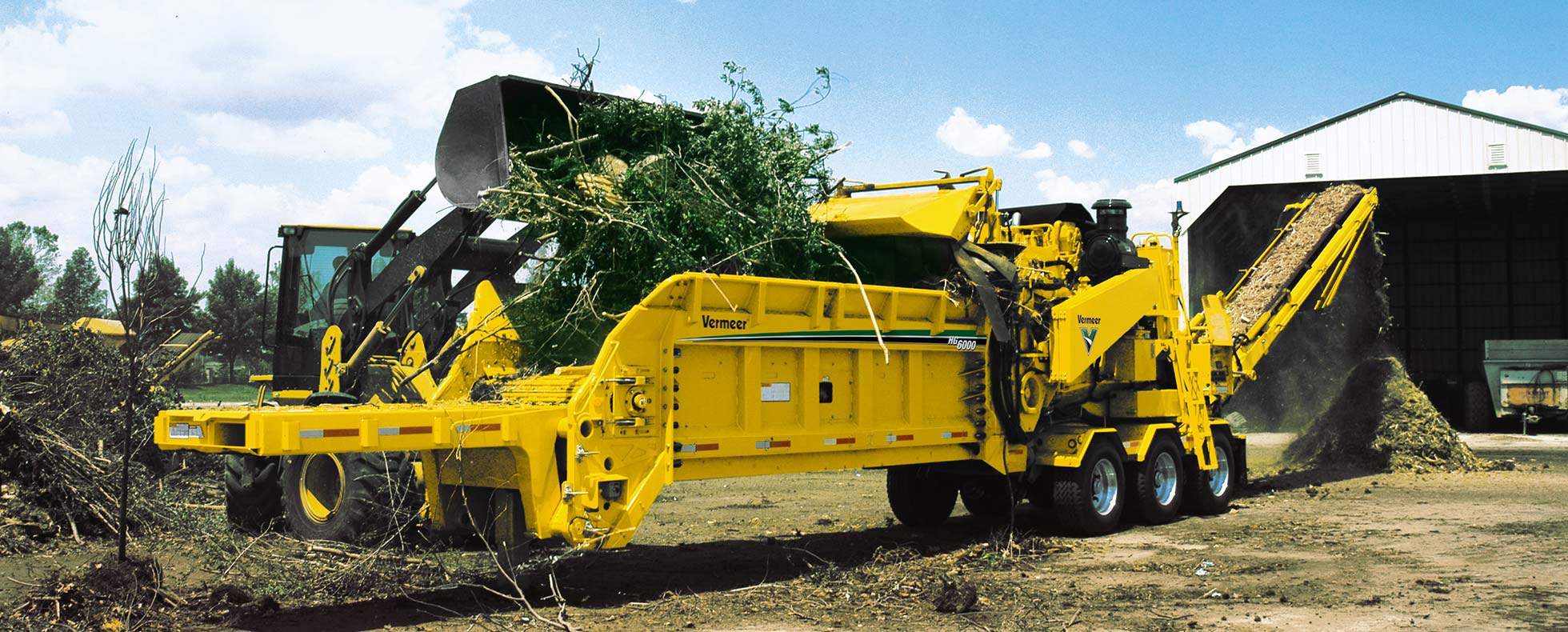
Day in and day out, horizontal and tub grinders are put to the test. Wood, compost, recyclables, and waste of all types are thrown at these machines, with the expectation that a precise finished product will come out on the other side.
Although they’re built to be tough, dependable machines, a grinder is only as good as its operator. Neglecting maintenance, using the wrong type of cutting tips, even disregarding safety practices all can result in a machine that operates at less than an optimum level.
From production and profitability to uptime and uniformity, get the most out of your grinder with these five tips.
Suitable Screen Configuration
Round or square openings. Large or small screen area. Added features to achieve a specific outcome. Several types of grinder screens are available. To get the best results from the grinder, use the proper screen
for the material being processed and the desired end-product.
As a general rule of thumb, round screens are ideal when consistent finish material is the desired outcome; for example, mulch production. Conversely, square screens have more open area for higher production, making them a great choice when consistency isn’t of high concern but volume is. Certain screens are designed for wet material and commonly used for compost, food waste, and green waste. Further specified configurations are available with assistance from a local dealer.
Correct Cutting Tips
Similar to screen configurations, a variety of cutting tips is offered to suit different types of materials. Ensuring the proper tip is used for the material being processed is crucial to preventing issues with the finish
product as well as damage to the tips.
And just as important as the material being processed is what else might be mixed in with it. Contaminants can be present in all types of material and, when not identified upfront, can damage the grinder’s cutting tips and screens.
For example, abrasion-resistant tips should be used when processing dirty material that could include highly-abrasive contaminants like sand. Conversely, wide-block tips are the most universal style and work well on wood, compost, and green waste. Additional
options are offered for further specific applications.
Regular Routine Maintenance
Prior to starting up the machine, the operator should conduct a quick inspection. A daily checklist might look something like this:
-Visually inspect machine for anything that appears to be damaged or could interfere with operation
-Check the engine oil level
-Check the engine oil to be sure it’s free of contaminants; change as needed
-Grease high-activity areas
of the machine
-Check wear parts; replace as needed
*Smaller screen size tends to increase wear on the cutting tips so operators who use this configuration need to replace more frequently
A final note, many of the grinder’s wear parts can be rotated for maximized life expectancy. Depending on the machine’s hours and applications, the operator should follow a schedule for timely rotation.
Standard Safety Checks
Be aware of nearby people and equipment when operating a grinder. An operator should always put the safety of him/herself and others ahead of all else.
All operators must comply with OSHA and their employer’s regulations regarding personal protective equipment (PPE) when working with or around a grinder.
To reduce the potential of a fire hazard, clear the machine of debris daily, taking extra care to ensure the mill bearings are free from debris. Make sure the infeed roller is clear before turning on the machine.
On-Point Operation Technique
Whether a 10-year veteran of a company or a new employee, every grinder operator should receive thorough training on the machine prior to operating. Owners, mechanics, and anyone else who may work with the machine
at some point should be trained on it as well. Reputable dealerships typically provide free training at the time of equipment setup.
Prior to starting the machine for the day, address all daily maintenance and safety checks.
At the end of the day, allow the machine ample time to cool down before fully shutting it off. Never attempt to do any maintenance checks of the machine, especially the engine, until it has cooled completely.
By combining a small time investment with heightened awareness, every operator can get the most out of horizontal and tub grinders.
--
About The Author
Andrew Knudson is Recycling Account Manager for the Southern California region of RDO Vermeer.
For more information on grinder operation or servicing your equipment, contact your local RDO Vermeer store.